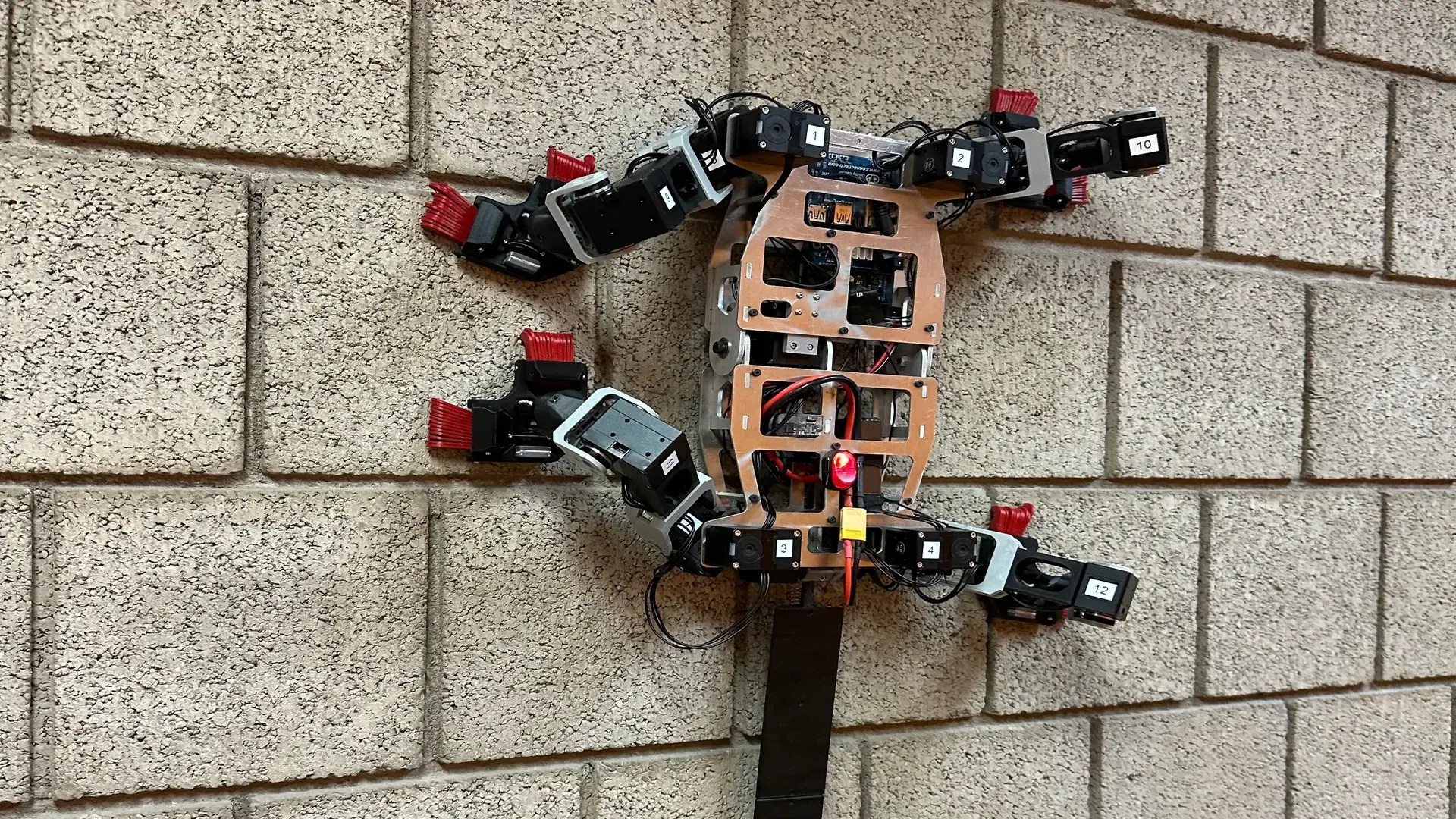Tech
Lizard-like robot climbs walls with insect-inspired passive grippers

Researchers at Carnie Melon University (CMU) have developed a robot that uses bio-inspired grippers to scale tricky surfaces like rocks.
CMU team’s design offers fully passive grippers and wrist joints that enable secure grasping while reducing both mass and complexity. Coupled with an optimization-based control strategy, the system distributes forces among the robot’s grippers to minimize the risk of unexpected detachment.
According to researchers, the four-legged bio-inspired robot prototype has shown that it can climb vertically in full Earth gravity on rough rock surfaces and level cinder block walls.
The details of the team’s research were published on the University’s Robotics Institute website.
Advancing microspine gripper tech
Climbing robots can investigate scientifically valuable sites that conventional rovers cannot access due to steep terrain features.
Although certain experimental robots employ suction-based grasping systems for smooth surfaces, this technology is ineffective on rough surfaces like rock where a seal cannot be established.
Robots equipped with microspine grippers are well-suited for ascending rocky cliff faces. These grippers release hooks when lifted for the next step. While passive microspine grippers rely on the robot’s weight for grip, they excel on flat surfaces but face challenges on uneven cliffs, necessitating diverse climbing tactics.
Overcoming the challenge of gripping rough surfaces like rocks, active microspine grippers utilize electric actuators to embed hooks into the surface, ensuring a motorized hold in all directions.
According to researchers, despite their effectiveness, these grippers are often bulky, energy-intensive, and mechanically intricate, leading to slower climbing speeds.
This prompted the CMU team to design the Lightweight Observation Robot for Irregular Slopes (LORIS) that can tackle unstructured steep and
vertical terrain.
Pioneering climb technique
The CMU team equipped LORIS with splayed microspine grippers at the end of its four legs. The bot also employs a passive wrist joint, allowing the grippers to respond to leg movements.
Through onboard depth sensing and a microprocessor, it strategically moves its legs so that grippers on opposing legs secure the climbing surface simultaneously, using an insect-inspired climbing tactic called directed inward grasping (DIG).
The LORIS robot’s vertical climbing ability was tested on cinderblock, vesicular basalt, and slag. The robot climbed in 10 attempts per surface until it reached the top or fell.
Trials on cinderblock showed a reduction in step failure rate from 6.4 percent to 2.3 percent with the DIG strategy, and the robot climbed the 1 m wall in 6/10 trials compared to 1/10 without DIG forces.
Researchers claim that LORIS is the first quadruped to “generate DIG forces using microspines and, at 7 pounds (3.2 kilograms), the first robot of its size to demonstrate free-climbing on irregular vertical rock faces in full Earth gravity,” according to the study.
While LORIS managed various terrains, its current reliability falls short for real-world use, where a single fall could be disastrous. According to researchers, most cinderblock trial failures were due to one gripper losing grip.
LORIS has only four grippers, with one often in the swing phase, making unexpected disengagements irrecoverable. In contrast, hexapedal robots maintain five grippers engaged at all times, preventing falls from single gripper failures.
The robot prototype’s current performance has two important directions for further research, as noted by the team. One of these involves solving the problem of foot selection on uneven terrain where positions and shapes suitable for such purposes must exist.
Another alternative involves designing a gripper adaptable to different surfaces and avoiding compromising the required degree of flatness or actuation. According to researchers, instantly engaged passive grippers can enable dynamic climbing moves, improve energy utilization, or even facilitate return after a fall or jumping towards higher handholds.
ABOUT THE EDITOR
Jijo Malayil Jijo is an automotive and business journalist based in India. Armed with a BA in History (Honors) from St. Stephen’s College, Delhi University, and a PG diploma in Journalism from the Indian Institute of Mass Communication, Delhi, he has worked for news agencies, national newspapers, and automotive magazines. In his spare time, he likes to go off-roading, engage in political discourse, travel, and teach languages.










